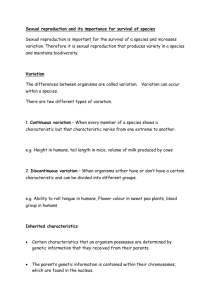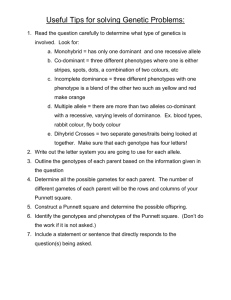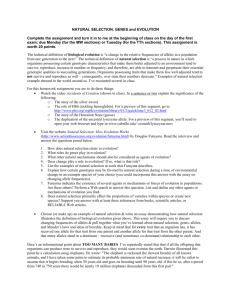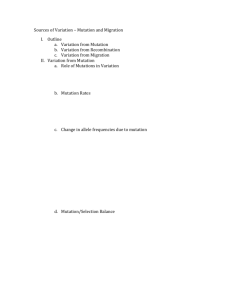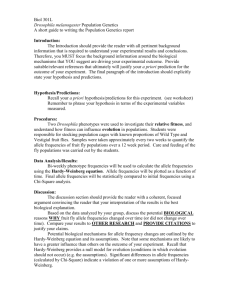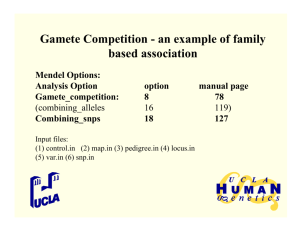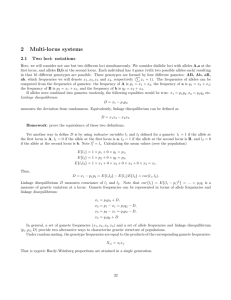overheads1
advertisement
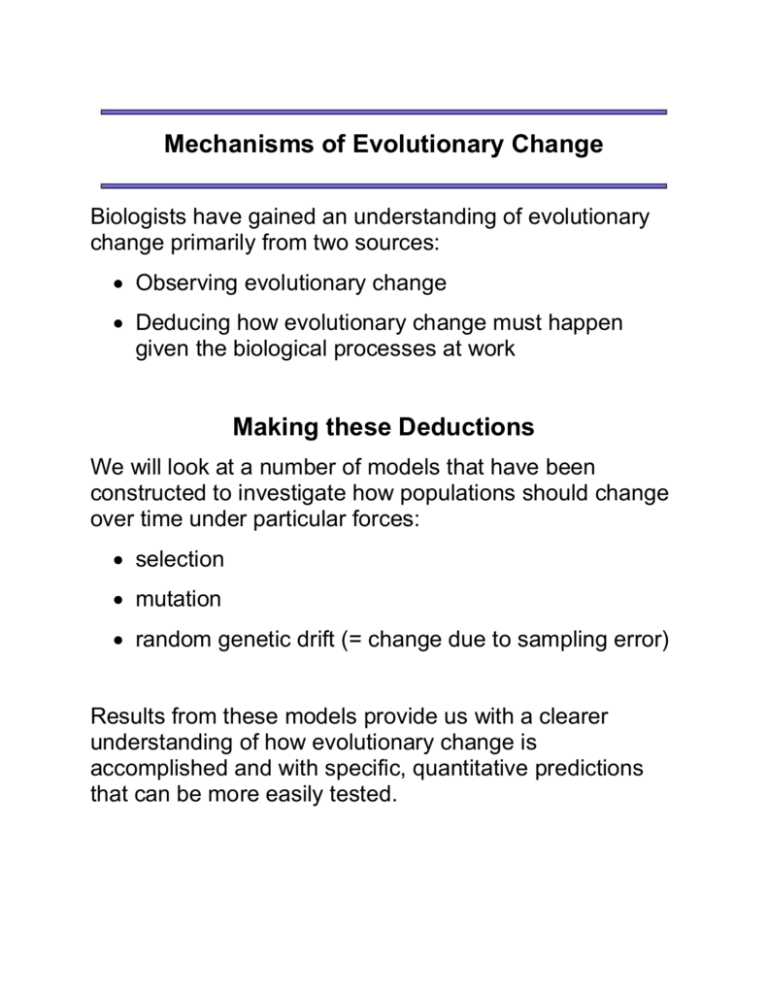
Mechanisms of Evolutionary Change Biologists have gained an understanding of evolutionary change primarily from two sources: Observing evolutionary change Deducing how evolutionary change must happen given the biological processes at work Making these Deductions We will look at a number of models that have been constructed to investigate how populations should change over time under particular forces: selection mutation random genetic drift (= change due to sampling error) Results from these models provide us with a clearer understanding of how evolutionary change is accomplished and with specific, quantitative predictions that can be more easily tested. Forms of Selection To determine how evolution will occur under natural selection requires specifying how selection acts on a trait. There are three general classes of selection: Directional selection = Selection for a higher or lower value of a particular trait UP = Individuals with more of a certain trait are more likely to survive and reproduce DOWN = Individuals with less of a certain trait are more likely to survive and reproduce Stabilizing selection = Selection for intermediate values of a trait over extreme values Disruptive selection = Selection for extreme values of a trait over intermediate values Population genetics is the sub-field concerned with concerned with predicting and/or observing the changes that occur over time at genes underlying a trait. Models are particularly important in cases like disruptive selection: The population can be pulled up or pulled down depending upon the relative strengths of selection. Under certain special circumstances, the population can even split apart leading to both an up and a down line. The distributions drawn above illustrate quantitative traits, such as height or weight, that have a normal (bell-shaped) distribution. Such traits are generally influenced by a large number of genes. Before discussing models of many genes, we will start with simpler models with one genetic locus. Dynamics without Selection Before we learn how selection affects a population, we need to understand what happens in the neutral case, when all individuals are equally fit, i.e. equally capable of survival and reproduction. Consider a diploid population with two alleles (A and a) at one locus. Let P = frequency of AA individuals R = frequency of Aa individuals Q = frequency of aa individuals NOTE: P + R + Q = 1 since the frequencies of all nonoverlapping categories must always sum to one. The frequency of allele A, p , in this population is given by the frequency of AA plus half of the frequency of Aa (since only half of a heterozygote's genes are A): p = P + 1/2 R Similarly, the frequency of allele a, q , in this population is given by half of the frequency of Aa plus the frequency of aa: q = 1/2 R + Q NOTE: p + q = P + R + Q = 1. Let us model what happens to these genotype frequencies over one generation. We will assume: No selection No mutation Large population size (= ignore sampling error) Random mating of gametes When meiosis occurs and the adult population produces gametes, AA individuals produce 100% A gametes, Aa individuals produce 50% A gametes, and aa individuals produce 0% A gametes. Therefore, the frequency of A among the gametes is: 100% P + 50% R + 0% Q = P + 1/2 R But we already have seen P + 1/2 R : it was the allele frequency, p , in the previous generation. Similarly, the frequency of a among the gametes will be q . When all adults are equally fertile, the allele frequencies among the gametes equals the allele frequencies among the adults that produced them. Under the assumption that gametes randomly unite, there are four possibile combinations: First gamete is A and second gamete is A (probability p 2) First gamete is A and second gamete is a (probability p q ) First gamete is a and second gamete is A (probability q p ) First gamete is a and second gamete is a (probability q 2). Hence, among the offspring of the next generation, the frequency of the three genotypes equals: P' =p2 R' =2p q Q' =q2 Point 1: After one generation of random mating, the genotypes within the population are at the frequencies we would expect if the alleles within an individual are uncorrelated. These frequencies, expected in the absence of selection and with random mating, are known as the Hardy- Weinberg frequencies. Among these diploid individuals, notice that the frequency of A is the same as it was in the previous generation: p ' = P ' + 1/2 R ' =p2+p q = p (p + q ) = p (Show that q ' = q .) Point 2: In the absence of selection and mutation, allele frequencies remain constant. Meiosis and random mating do not change allele frequencies. (In the cartoon population illustrated above, the population was not at Hardy-Weinberg. Were there too many or too few heterozygotes?)



